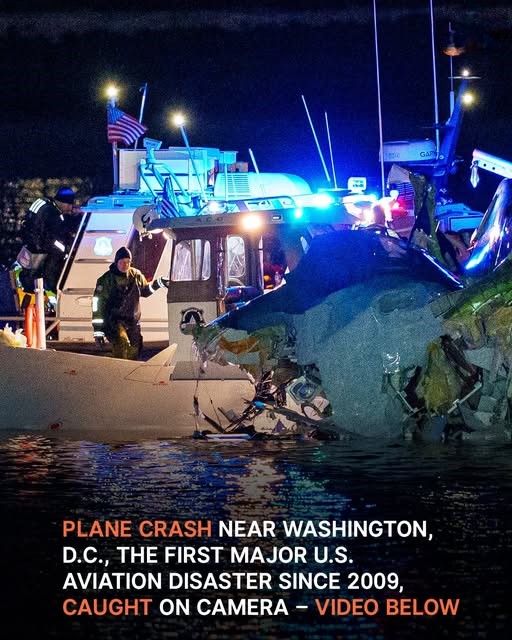Rescue teams are working tirelessly after a devastating midair collision between a military helicopter and a passenger aircraft. Eyewitnesses captured parts of the tragic incident on video, as officials warn that freezing temperatures are complicating efforts to locate survivors.
A plane crash near Washington, D.C., has drawn national attention, marking one of the deadliest aviation disasters in recent U.S. history. Authorities confirmed that American Airlines Flight 5342, a PSA Airlines-operated Bombardier CRJ700, collided with a U.S. Army Black Hawk helicopter near Reagan National Airport. The aircraft had been en route from Wichita, Kansas, when the incident occurred just before 9 p.m. on January 29, 2025.
Emergency calls flooded in moments later, reporting an aircraft crashing into the Potomac River. The Black Hawk, assigned to the 12th Aviation Battalion at Fort Belvoir, Virginia, had been conducting a training mission when the collision took place. Investigators are still working to determine why the two aircraft crossed paths at such a critical moment.
The crash immediately disrupted air traffic, forcing 19 flights to be diverted to Dulles International Airport. Reagan National, one of the country’s busiest airspaces, remains closed as officials piece together what happened. Preliminary reports indicate that air traffic controllers had instructed the helicopter to maneuver around the approaching jet just before impact.
Video footage captured the moment of collision, showing both aircraft engulfed in flames before plunging into the frigid waters below. Witnesses, including driver Ari Schulman, recalled seeing a sudden change in the plane’s trajectory moments before disaster struck.
“I saw it banking at a sharp angle, and then there was this bright flash,” Schulman said. “It was like nothing I’d ever seen before.”
With both aircraft now submerged, search and rescue operations are underway. Mayor Muriel Bowser confirmed that 64 passengers and crew were aboard the commercial flight, while three were in the military helicopter. First responders are battling harsh conditions, including freezing temperatures and strong river currents, as they search for survivors.
“The focus right now is on saving lives,” Bowser stated. “Our teams are working as quickly and carefully as possible.”
Families of those aboard the flight have gathered at a designated support center, where officials are providing updates. Jack Potter, CEO of the Metropolitan Washington Airports Authority, acknowledged the heartbreaking uncertainty facing loved ones.
“We have people who were waiting to pick up family members last night. Now they’re waiting for news, and that’s an unimaginable pain,” Potter said.
Among the passengers were several U.S. figure skating competitors and two Russian skaters, adding an international dimension to the tragedy. Kansas Senator Jerry Moran, whose state has strong ties to many on board, described the incident as deeply personal for his community.
Authorities have yet to confirm fatalities, but the outlook remains grim. The National Transportation Safety Board is leading the investigation, while the FBI’s Washington Field Office dive team has joined recovery efforts. Nearly 300 first responders are involved, navigating treacherous conditions in the icy Potomac River.
D.C. Fire and EMS Chief John Donnelly described the challenges of the operation. “The water is about eight feet deep, with strong currents and floating ice making it extremely hazardous for our teams,” he said.
With river temperatures near 35 degrees Fahrenheit, hypothermia is a major concern. Experts warn that within seconds, cold shock can cause gasping and hyperventilation. Without rescue, survival times range from just 30 to 90 minutes.
This crash marks the most significant U.S. commercial aviation disaster since 2009. While authorities work to uncover the cause, families and the nation are left grieving as the search continues.
